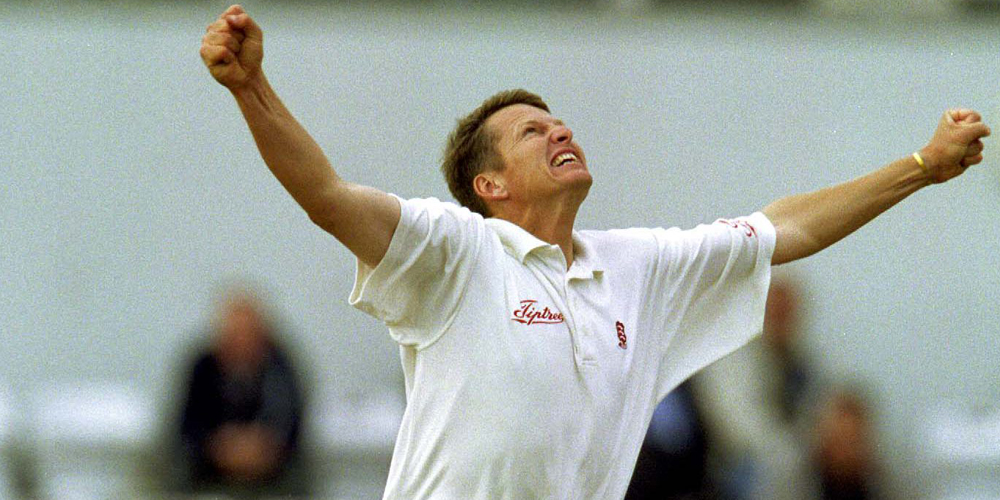
With the phenomenal success currently being enjoyed by spinner Simon Harmer, it is an opportunity to reflect on a few other top-class spin kings in the past 60 years who have made such an indelible impression to the Club over the years.
Even before that time, Essex have been blessed with some leading “twirlers” who served with such distinction. This includes the likes of cousins Peter and Ray Smith who claimed 1,610 and 1,317 wickets respectively, Bill Greensmith with a career haul of 720 victims for the county, Jack O’Connor who amassed 537 scalps and Joe Hipkin who had taken 518 wickets by the time his career had come to a close in 1931.
But looking back through time, starting with the 60’s, we focus on half-a-dozen more bowlers of outstanding talent and remembered with fondness and admiration but all those fortunate enough to see them play.
David Acfield (1966-1986)
Born in Chelmsford in 1947, David made his Essex debut against Kent at Westcliff in 1966 whilst a student at Cambridge University. He took 53 wickets that summer which included 25 for the County to establish himself as an integral member of the first team squad.
David was capped in 1970 and showed his value as a one-day player when he took 5 for 14 against Northamptonshire in a John Player League match. He toured East Africa with MCC three years later and then represented MCC against the Champion County, Hampshire, at Lord’s in 1974 and MCC against West Indies two years later.
He could count himself as very unfortunate not to win major international honours but he was able to play a significant part in helping the county win a string of trophies. Able to turn the ball sufficiently to unhinge batsmen, he also had the virtues of being able to bowl consistently with command of line and length.
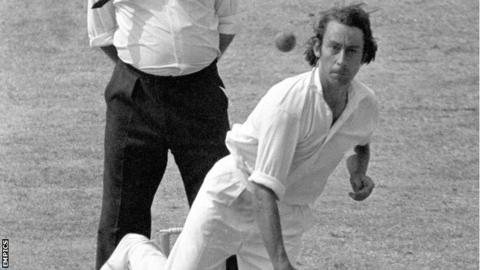
The off-spinner played for the County from 1966 until 1986 and formed a highly effective spin partnership with Ray East.
His best year with the ball came in 1981 when he collected 76 first-class wickets @ 22.61 whilst he also produced an amazing spell of bowling two years later that led Essex to victory against Somerset at Taunton. Chasing 255 in three and half hours, the home side succumbed to David’s guile as the bowler enjoyed a remarkable spell of five wickets for one run in 13 deliveries to finish with 6 for 34 and provide the defining contribution in the 141 runs victory.
Although batting was not his forte, taking wickets certainly was. By the time he retired from playing in 1986, he had taken 855 first-class wickets @ 27.49 in 378 matches for Essex that included 10 wickets in a match on 4 occasions together with 30 instances of 5 wickets or more in an innings.
A talented sportsman, he represented the British fencing team at the 1968 and 1972 Olympics and won the Gold Medal at the 1978 Commonwealth Games. Following a role on the CLub’s Committee and Treasurer, he was named as the Club President in November 2017.
John Childs (1985-1996)
Born in Plymouth in August 1951, John had spent ten seasons with Gloucestershire taking 421 wickets for the West Country County but at the age of 33, he was released. He made the move to Essex where he suffered a poor first season taking only five costly wickets. The County though retained every faith and belief in the slow left-arm bowler. After spending much of the winter at Lord’s working with Fred Titmus, the former Middlesex and England off-spinner and the MCC Head Coach, Don Wilson, John was transformed into the most successful spinner in the country enjoying many successful seasons.
Explaining the change in his technique, the slow left-arm bowler said at the time: “Pitches have got slower in the 10 years since I started, and my basic problem in 1985 was that, without the confidence of taking wickets, I had been running up and just ‘putting’ the ball there. The result was that even when the ball was turning, it had so little pace batsmen could generally adjust and play it off the pitch.” Titmus described the flaw in a way which will strike a chord in all spin bowlers lacking confidence. “He was bowling as though he half expected the ball to come back
like a bullet!” he commented.
A quicker approach to the crease and a flatter trajectory brought John 89 wickets in 1986 becoming the leading English qualified bowler by some distance that summer. He continued to prove a formidable opponent for batsmen assisting Essex to three Championship titles as his performance with the ball proved so defining on so many occasions and he teamed up with Peter Such to forge one of the most effective spin partnerships in the country.
An orthodox spinner, John’s personal achievements were acknowledged in 1987 when he was named as one of the five Wisden Cricketers of the Year having helped his county carry off another championship title. The following year, he became England’s oldest Test debutant for 41 years when, at the age of 36 years and 320 days, he made his international debut against West Indies before winning a second cap that summer. He was named in the party for the winter trip to Indian but the tour was cancelled on political grounds and he was not picked again, although he was named in the England XII at Headingley in 1992.
His career-best return with ball was 8 for 58 and on 6 occasions he took 10 wickets in a match whilst he could also boast of 31 occasions when he took five wickets in an innings for Essex. By the time he finally retired in 1996 well into his forties, this most popular of cricketers had taken 604 wickets in 214 matches for Essex and he then moved into a coaching role at Chelmsford and then became Academy Director.
Ray East (1965-1984)
Ray was a slow left-arm bowler with abundant ability who took 1,010 wickets @ 25.54 in his 19 seasons with Essex yet failed to win International recognition for his country. Born in Manningtree in 1947, he represented Essex from 1965 until 1984 and claimed 10 wickets-in–a-match hauls on 10 occasions and 5 wickets or more in an innings on 49 occasions with best figures of 8 for 30. He was also a useful batsman with a career aggregate of 7,103 runs during his 405 first-class matches for Essex. Add into those statistics 269 wickets in 280 List ‘A’ matches together with 1139 runs and that illustrates the value of this wonderful servant to the cause of Essex Cricket.
One of the most popular characters to ever play county cricket, Ray combined his on-field wit and antics with a series of superb performances with the ball and for many years he formed an effective ‘spin twin’ partnership with David Acfield that, in 1979, helped the County to finally unlock a trophy cabinet that had laid dusty and bare since its introduction to the County Championship back in 1895. Further silverware followed a-plenty with the fun-loving Ray playing a significant part.
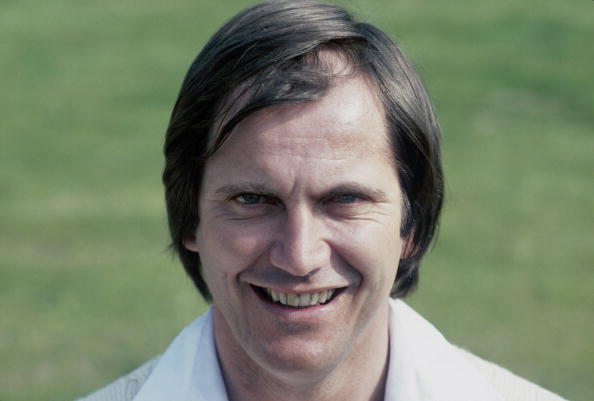
His best Championship bowling return in a match was recorded against Warwickshire when he claimed match figures of 15-115 and although he only made one first-class hundred, he played many notable innings when runs were desperately needed.
In 1977, he took 8 for 30 against Nottinghamshire at Ilford which was to prove the best figures of any bowler that summer. Later in the season, at Leyton, he took 8 Derbyshire wickets for 57 runs during the only 45 minutes play that was possible on the first two days and in the second game of that festival, he demolished Glamorgan with figures of 8 for 90 and then 4 for 23.
Ray’s most successful season came in 1978 and coincided with his benefit year when he accounted for 92 batsmen yet he failed to win an England cap despite performing the hat-trick in a Test trial game. Unfortunately, his career corresponded with that of the brilliant Derek Underwood who was England’s first choice left-armer for more than a decade.
Ray proved to be a difficult bowler to face in one-day cricket as John Player League figures of 5 for 18 against Worcestershire at Harlow and 6 for 18 against Yorkshire at Hull testify although he once went for 79 in 8 overs in a Sunday League match. He also chipped in with welcome runs and in 1982; he and Stuart Turner set a new tenth wicket partnership record of 81 in the Nat West Trophy playing against Yorkshire at Headingley.
Ray retired from first-class cricket in 1984 and he took up a position with the County of coach and Second XI captain before becoming the County’s Youth Development Officer in 1988. He also played for Suffolk, in 1991 and 1992, and ultimately became cricket coach at Ipswich School
Robin Hobbs (1961-1975)
Robin first came to the attention of Essex when playing for Chingford and was offered a contract to play county cricket, Over the ensuing years, he became one of the most likeable and popular players to play for the County. He was a leg-spinner at a time when that absorbing style of bowling became something of a dying art and its cause was not helped by the introduction of limited-overs cricket. In fact, by the time Robin left Essex in 1975, he was the only genuine leg-break bowler in county cricket. He proved a very effective perform in both three-day and one-day cricket
Born in 1942, he made his Essex first team debut in May 1961and by the end of the season, 12 matches had produced 23 wickets for the young spinner. However, it was not until 1963 that he established himself in the senior side and soon began to attract the attention of the international selectors as his career progressed with some rapidity.
The following season of 1964 proved a highly-rewarding season for the player. He took 10 wickets against Leicestershire at Grace Road, was awarded his county cap and was selected by the MCC for the winter tour of South Africa.
Robin bowled flighted leg-breaks and well disguised googlies from a six pace run and was a fine and dependable county player. In 1966, he took 13 wickets in the match with Glamorgan at Swansea in a year that saw him claim 88 victims and two years later, at Ilford, the Welsh county’s bowlers were on the receiving end when Robin struck his maiden first-class century.
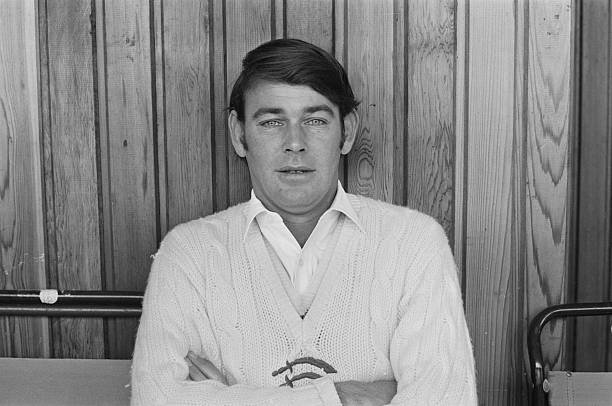
He took 12 wickets in his 7 Test appearances for England and continued to be a prolific bowler in the county game as illustrated in 1970 when he captured 102 wickets at 21.40 in all matches. He was a useful lower-order batsman who astonished everyone by recording the fastest first-class century for 55 years (44 minutes) when playing for Essex against the Australians in 1975. His second fifty took just 12 minutes.
On another occasion, he and Stuart Turner posted 192 for the eighth wicket at Ilford against Glamorgan in 1968 with both batsmen recording maiden centuries. Robin was also a fine fielder in the covers.
After retiring from Essex, he played minor county cricket with Suffolk before surprisingly re-emerging in 1979 to captain Glamorgan for a three-year spell. His final match for the Welsh side was against Essex at Colchester when he rounded off an excellent first-class career by taking 5 for 85 in the second innings.
During his first-class career, he took 10 wickets in a match on five occasions and five wickets in an innings 32 times illustrating his accuracy and skilful ability to vary the flight and pace. He was the last English leg-spin bowler to take 1,000 first-class wickets in his career. In all, he took 1,099 victims at an impressive 27.09.
He is still a regular and popular visitor to the County’s matches.
Peter Such (1990-2001)
By the time he announced his retirement from the game in 2001, the off-spinner had a Test and first-class career count of 886 wickets; 573 were in Essex colours. A native of Helensburgh, Scotland, Peter had previously played for Nottinghamshire and Leicestershire before making a career-changing move to Essex in 1990.
His career had somewhat stagnated before he opted to lay down his roots with the Chelmsford-based county but after a mediocre start in his new surroundings, his bowling started to flourish and he was an integral member of the side that went on to lift successive County Championships in 1991 and 1992. He was also an accomplished member of the Essex one-day attack assisting the county to their Benson & Hedges triumph in 1998 plus two NatWest Trophy Finals in 1996 and 1997.
His exploits with the ball caught the eye of the England selectors and he won the first of his 11 Test caps in the 1993 Ashes series with Australia. It was a dream debut for the bowler who returned figures of 6 for 63 at Old Trafford and became the highest England wicket-taker in the series. Such played in eight of the ‘home’ Tests spanning 1993 and 1994 but was then overlooked by the selectors until being recalled for the Ashes tour Down Under in 1998/9 where he played two further Test matches before his international career ended where it had started in Manchester. Even then, ‘Suchie’ was to sign off with a memorable performance although this was with the bat. Playing against New Zealand, he batted for 72 minutes without scoring a run, the second longest duck in English Test history and when he was finally dismissed, he left the field to a standing ovation.
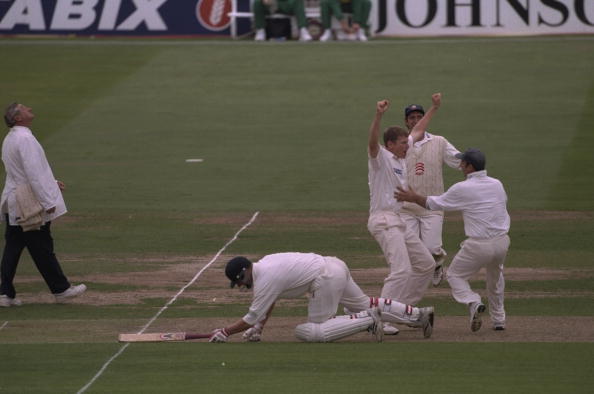
Not noted for his batting, he is fondly remembered by Essex followers for hitting the winning boundary for the county on the second day of a NatWest Trophy semi final against Glamorgan in 1997. After play had been suspended the previous day due to bad light, it led to an episode that saw Mark Ilott and Robert Croft engaged in on-field confrontation and witnessed on BBC television.
However, it was as a bowler with nagging accuracy that Peter excelled achieving a 5-wickets haul in an innings against every county side – apart from Essex. His best bowling figures for Essex were 8 for 93 (11-160) in the match against Hampshire at Colchester in 1995, and the following summer, he took 82 wickets.
A year after finishing his playing career in 2001, he was appointed Essex Academy Director, a position he held for 5 years until making a career-change. However, in September 2009, he was appointed by the ECB as National Lead Spin Bowling Coach.








